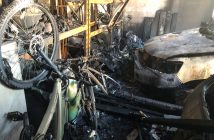
Do you know exactly what to do if you find a fire or hear the fire alarm, asks Lara Labudde.
Building occupants’ confidence in their evacuation procedures determines the safety of those involved in an emergency – not just the occupants but also the emergency response crews.
These evacuation procedures have become increasingly important with the new Health & Safety at Work Act (HSWA), which requires a PCBU or “person conducting a business or undertaking” to tick all the relevant safety boxes.
Fire Service legislation sets out the triggers for requiring an evacuation scheme as any building which has the facilities for:
- 10 or more persons working (unless the building has a compliant sprinkler system)
- five or more persons sleeping (other than a household unit) in three or more units (unless the building has a compliant sprinkler system)
- 100+ persons to gather in one area for any purpose
- early childhood education
- storage or processing of hazardous or dangerous goods
- nursing or geriatric care
- specialised care for disabilities
- lawful detention facilities.
In fact, nearly all other buildings require a ‘procedure’ (including public toilets if you really stick to the legislation), although crown buildings are exempt.
The law says the building owner is ultimately responsible for ensuring an evacuation scheme or procedure is in place.
Tenants can arrange for this to be implemented, but will always need a signed authority from the building owner or their financial representative such as a property manager. Obviously, a building with multiple tenants under one alarm will find this very difficult.
Many people are confused by the difference between a scheme and a procedure, but it’s really quite simple.
A procedure is simply the part of a scheme that sets out what steps to take in the event of a fire emergency. The ‘scheme’ is the process responsible for ensuring that occupants are trained and confident to carry out the procedures.
A scheme incorporates the following:
- documentation that must be approved by the NZ Fire Service (including building information, authorisations, the procedures intended for the building, who will conduct them, the building owner’s compliance responsibilities etc.)
- the actual procedures written for use by tenants outlining what do during a fire emergency
- procedure training requirements and schedules for wardens and tenants in the building
- installation fire action notices, which must be displayed by all fire alarm call points and in the building’s common areas
- a supply of wardens’ identification materials such as vests or caps and tally boards to record information about the evacuation for incoming emergency services where applicable
- the six-monthly trial evacuations/training programmes legally required to maintain compliance – though childcare or education facilities are guided by the Ministry of Education (MoE) to conduct trial evacuations three monthly or per term
- reports filed with the NZ Fire Service to confirm continued compliance – if the report isn’t made to the correct office the Fire Service marks the scheme as inoperative
- instructions for each apartment in accommodation buildings.
Although there is no audited requirement for trial evacuations or training where only a ‘procedure’ is required, there may come a time when the NZ Fire Service may require evidence that occupants are aware of the procedures – not trial evacuations but perhaps training records.
Until recently the NZ Fire Service only had the resources to focus on high-risk buildings, meaning a large percentage of buildings that do require NZFS-approved evacuation schemes may have flown under the radar and not be aware or not wished to take responsibility, but this is about to change.
It is also worth noting the some building owners may be forced to implement trial evacuations and training by outside authorities such as the Accident Compensation Corporation, the MoE, the Occupational Safety and Health Service or the Ministry of Health.
Although the Fire Service legislation is quite specific about which buildings are required to implement which activities, other agencies may have their own policies for compliance. In the case of ACC, quite substantial discounts can be gained by ensuring compliance.
Each building is unique and each has its own special processes, uses or design parameters that require special procedures, but essentially a procedure is simple – if you find a fire set off the fire alarm and if you hear the fire alarm leave the building.
In a perfect world, someone will have a quick check of each area on the way out and tell the person in charge what parts of the building are clear or not – so the Fire Service doesn’t have to waste time re-checking.
The hard part is getting people to have a positive attitude – rather than being annoyed by the inconvenience of a fire drill it can be simple, easy and quick if they participate willingly from the start.
There are very specific instructions that wardens need to understand before they accept their responsibilities, including:
- basic information about fire safety legislation
- a basic understanding of the building’s system
- an understanding of the dangers involved specific to the site
- knowing where firefighting equipment is located and how to use it
- knowing the assembly point locations
- the warden’s duties
- the building warden’s duties
- crowd control.
While building occupants are given their instructions in the form of fire action notices, we are coming to the point where delegated wardens are no longer as efficient as previously as everyone is either out at meetings, hot desking or working from home.
Evacuation consultants now find themselves encouraging as many regular occupants of the buildings to learn the duties of wardens as possible to cover the movement of staff.
In some cases they teach all staff so that someone will always be able to take on the role of warden during an evacuation and provide the vital information required by the emergency services when they arrive.
Another area of concern for evacuation consultants is buildings that have been DIY-ing their own evacuation schemes with information given to them in the 1950s.
For example, some sites still have staff crossing busy roads to an assembly area, or rely on a head count or roll call systems for information rather than a systematic physical check.
All safety procedures should be updated regularly as even procedures for calling 111 have changed, and all wardens need to be confident they can pass the right information to the emergency services at 111 call centres.
Evacuation consultants ensure they aren’t tying up fire communications teams by calling them prior to any alarm activation to make sure they are available.
Fire communications will often use this time to put their own trainees in the hot seat, so that everyone gets to practice as realistically as possible.
Since starting this routine, evacuation consultants have identified numerous issues and rectified them such as:
- people calling from inside where alarms are so loud the caller cannot be heard
- calls where the portable office phone has been cut off by the alarm system
- calls where the alarm interferes with the portable office phone
- calls where the portable phone lost the signal when the caller left the building as they were too far from base unit – all 111 callers are now trained to use a mobile
- address point issues.
All these issues are discovered when a proper 111 call is made, but for safety’s sake an evacuation where a 111 call is made must be managed properly.
Financially it doesn’t matter who initiates these evacuation schemes or procedures, but building owners who try to do it themselves end up costing their business more having a consultant do it as they take substantially longer to work out what is required and without the expertise of knowing whether it’s actually right.
Lara Labudde is Director of Fire Safety & Evacuations Ltd, a member of the Fire Protection Association that offers evacuation schemes, trial evacuations and warden training and is one of only a handful of local consultants certified to all four levels of evacuation consultancy



